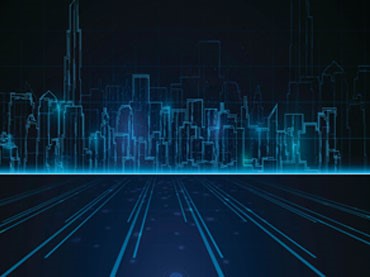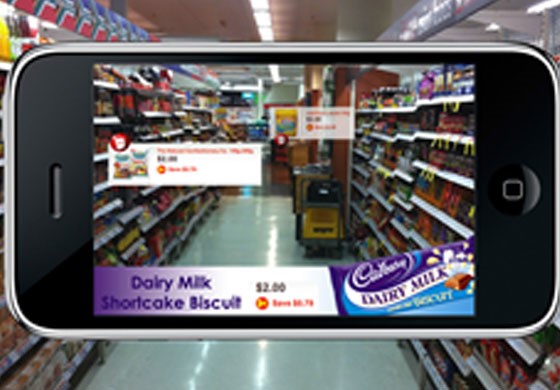Our Blog
HOW AUGMENTED REALITY HAS ENHANCED CUSTOMER EXPERIENCE & DRIVE GROWTH.
EVERY BUSINESS IS A DIGITAL BUSINESS, BECUASE EVERY CUSTOMER IS A DIGITAL CUSTOMER
It has been seen often at retail shops that shoppers uses social networking and mobility to transform their purchasing experiences. Considering this changing trend shop keepers are inclining towards many digital technologies to enhance and drive customer engagement. Augmented reality is the most core area of
Augmented reality is about replacing the physical environment with digital content like images to let its users to have enhanced and augmented experience of reality around them. Initially augmented reality was developed for military fighter jets to help the pilot to understand mission critically, but now it is widely used in automotive and gaming industry. Even in retail side augmented reality enabled retailers to provide their customers an exciting opportunity to bring product labels, shop windows and catalog images to the life in a ways never before imaginable. It is an innovative and convenient approach to reach customers and enhance over all experience. Customers are experiencing a number of key shopping challenges, which they preferably would like to solve from home. Many retailers have taken notice of customers' existing pain points, and some have taken action using augmented reality to help create more satisfying customer experiences.

FINDING ITEMS AND ACCESSING PRODUCT INFORMATION
Technologies are now available that make it possible for grocery shoppers to scan the aisles with their smart phone cameras to quickly identify products that are on sale or that address certain requirements Google's Project Tango goes a step farther, offering customized 3D in-store maps to help mobileequipped shoppers easily find the specific products they are seeking. Many other augmented reality solutions enabled shoppers to receive additional personalized information, recommendations, recipes and reviews when they scan specific products with their mobile devices.
VISUALISING PRODUCTS
Several fashion retailers are using augmented reality to enable their customers to "try on" clothes, jewellery or shoes virtually. Shiseido and Burberry Beauty Box stores offer similar augmented reality solutions for shoppers looking for cosmetics. These types of solutions often referred to as a "magic mirror," help customers decide which clothes or accessories to buy without having to try them on. Augmented reality can also show products and product variants that aren't available in a physical store.
Augmented reality is about replacing the physical environment with digital content like images to let its users to have enhanced and augmented experience of reality around them. Initially augmented reality was developed for military fighter jets to help the pilot to understand mission critically, but now it is widely used in automotive and gaming industry. Even in retail side augmented reality enabled retailers to provide their customers an exciting opportunity to bring product labels, shop windows and catalog images to the life in a ways never before imaginable. It is an innovative and convenient approach to reach customers and enhance over all experience. Customers are experiencing a number of key shopping challenges, which they preferably would like to solve from home. Many retailers have taken notice of customers' existing pain points, and some have taken action using augmented reality to help create more satisfying customer experiences.

POST-PURCHASE SUPPORT
Augmented reality can also be used for truly functional purposes, such as helping users understand how to use a product. Audi has created a virtual manual that provides the owner instant information about everything from the location of the coolant reservoir to what that button on the dash really does. Similar solutions from other retailers showcase how customers can assemble their products or install their dsl/broadband, stereo or TV equipment at home.
ENHANCING BUSINESS VALUE
Augmented reality has a lot going for it. It is easy to use and engaging. It overcomes the challenge of merging physical experiences with digital content. Along the way, it creates brand awareness and boosts customer engagement in an exciting way. And, importantly, it allows companies to regain ownership of the customer experience through the use of branded apps. Augmented reality can drive value in four fundamental ways:
Create an in-store experience at home
Even though in-store applications of augmented reality are powerful, their real potential is unleashed when they allow customers to experience virtual products in new environments. Product images have always been an important source for information when shopping online. But those images can only convey so much. Augmented reality solutions, such as the one offered by IKEA, bring the in-store experience to the customers' home, letting them see IKEA products together with the existing furniture. They merge the benefits of in-store shopping with the convenience offered by the online environment.
Enhance and update print media with digital content
Print media has many advantages. It can be inspiring. It does not require any special hardware. And it can be distributed broadly. Print media does, however, have some drawbacks. It is static, does not invite interaction, is not easy to update, and does not facilitate a purchase in a seamless way. Augmented reality combines the advantages of the print and digital world and encourages the customer to Involve deeper into the shopping journey. It helps retailers that rely heavily on print materials, such as IKEA, increase the return on their print investments, and helps to verify that their material is up to date.
Enable cost savings
An important, yet often overlooked, by product of augmented reality is cost savings. For example, an augmented reality solution can save retail space by allowing customers to experience many different product variations without the retailer needing to have all styles and sizes on display. It can save employee time, since customers can largely service themselves in a fun and interactive way. It can reduce the risk of returns. And it can even reduce the risk of products being damaged or stolen in the fitting room.
FUTURE OF AUGMENTED REALITY
Augmented reality market is increasing at a steady pace. It has been expected that augmented reality market will be a multi-billionaire market by the end of current decade.
